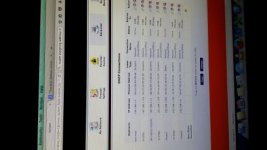raoulduke
Experienced Member
I got a network card for an LC; Farallon - I can check the model but I don't think any of that matters. All the diagnostic tests show the card as being okay. MacTCP Ping works fine and gets to the router (but not past local network addresses).
I set a static IP (192.168.1.251) on the router for the LC's MAC address. When I set an IP manually on MacTCP (2.0.4 I think - but 2.x), I think it shows up on the router. Two things: 1) it's a Verizon FIOS router. 2) I say I think because the MAC address shows up but I have no other indication of connectivity. I haven't been able to ping any servers or load any pages (I have MacWWW and MacWeb 1.1 (the LC only has 4mb or RAM)).
I guess the simplest form of my question would be to someone who's already done this: what am I doing very wrong? What's the easiest way to get an LC past a DHCP server and onto the net? I'm assuming attempting to use the DHCP server to distribute an IP address to the LC just flatly won't work?
I set a static IP (192.168.1.251) on the router for the LC's MAC address. When I set an IP manually on MacTCP (2.0.4 I think - but 2.x), I think it shows up on the router. Two things: 1) it's a Verizon FIOS router. 2) I say I think because the MAC address shows up but I have no other indication of connectivity. I haven't been able to ping any servers or load any pages (I have MacWWW and MacWeb 1.1 (the LC only has 4mb or RAM)).
I guess the simplest form of my question would be to someone who's already done this: what am I doing very wrong? What's the easiest way to get an LC past a DHCP server and onto the net? I'm assuming attempting to use the DHCP server to distribute an IP address to the LC just flatly won't work?

